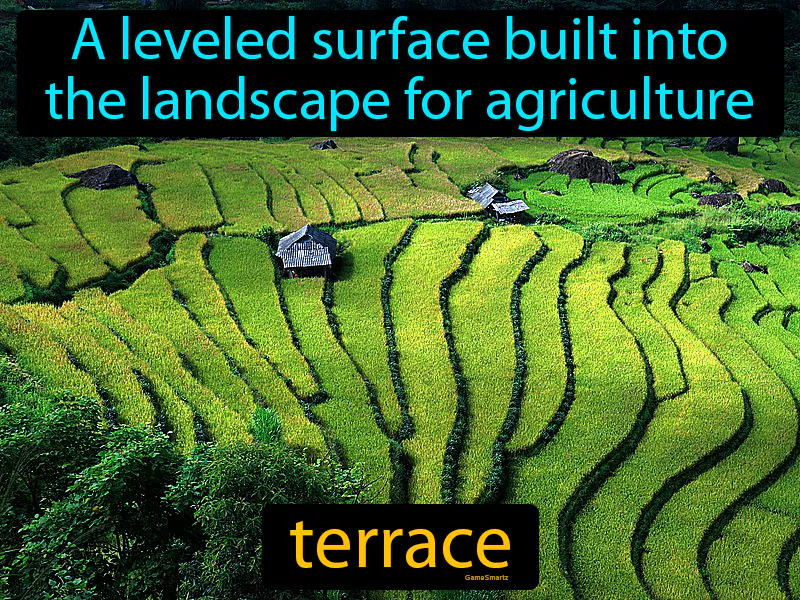Terrace
Terrace: Easy to understand
Terraces were leveled surfaces created on hillsides and mountains to make farming possible in difficult terrains, and they played a crucial role in the success of New Empires in the Americas, like the Inca Empire. These structures allowed ancient civilizations to maximize agricultural production by preventing soil erosion and managing water efficiently. To the people of these empires, terraces represented innovation, adaptability, and the ability to thrive in challenging environments. Today, the concept of terraces is still relevant, as it inspires sustainable farming practices in modern agriculture, helping to combat soil degradation and support food security. An example is the use of terracing in the Philippines' Banaue Rice Terraces, which continues to support local communities and preserve cultural heritage.

Practice Version

Terrace: A leveled surface built into the landscape for agriculture. Terrace. In history, a terrace is a flat ledge carved into hillsides for farming, which ancient civilizations used to grow crops on steep terrain.